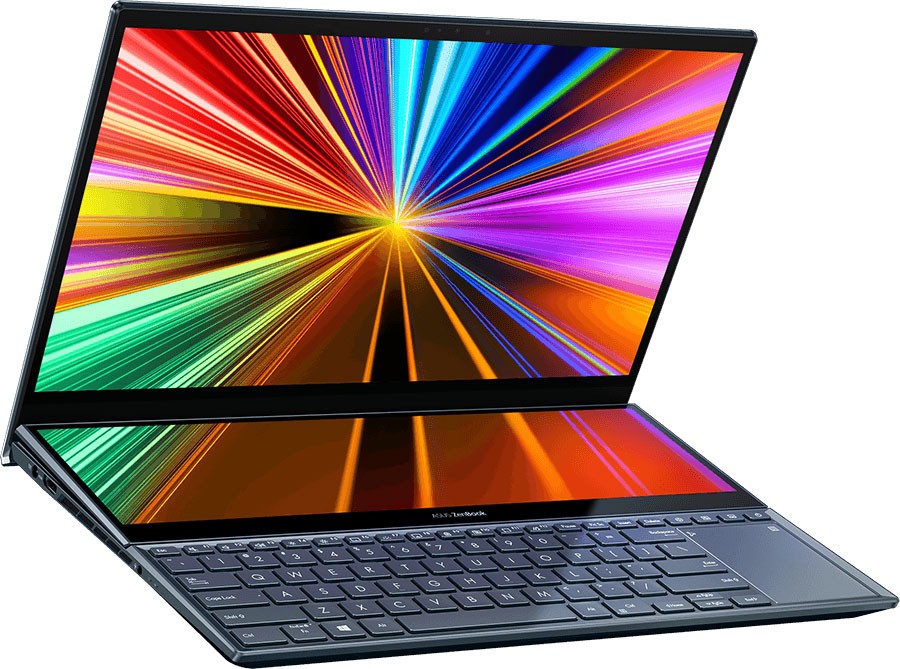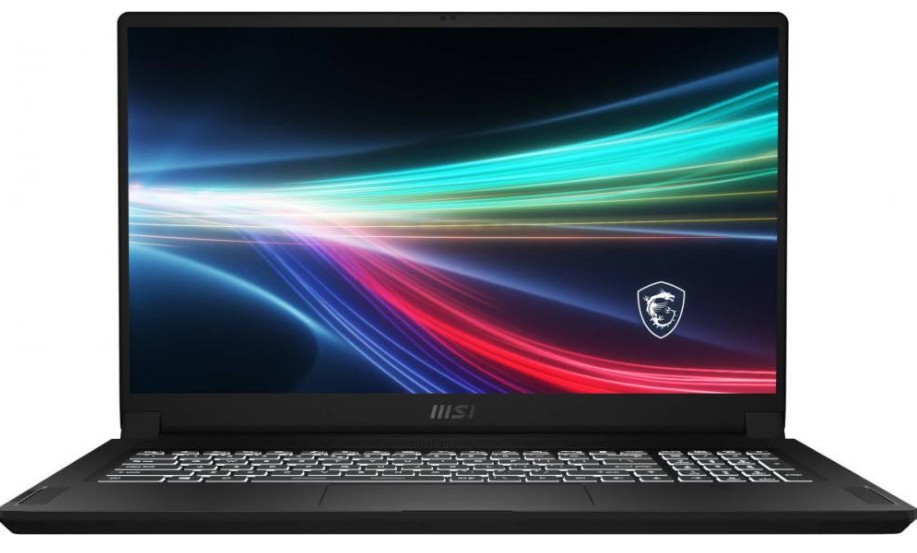Best Powerful Laptops For Trading In 2025



Editorial Note: While we adhere to strict Editorial Integrity, this post may contain references to products from our partners. Here's an explanation for How We Make Money. None of the data and information on this webpage constitutes investment advice according to our Disclaimer.
The most powerful laptops for technical analysis in trading for 2025:
Apple MacBook Pro 16-inch: Renowned for its superior screen quality, exceptional battery life exceeding 20 hours, and unmatched performance.
Dell XPS 17 9700: Features a sleek design, robust performance for trading applications, and impressive battery longevity.
Asus ZenBook Pro Duo 15 UX582: Equipped with a dual-screen layout, it’s ideal for multitasking, offering seamless chart analysis and real-time news tracking.
ASUS ROG Flow Z13: A portable 2-in-1 device, perfect for those who value versatility between tablet and laptop functionality.
MSI Creator 17: Designed for heavy multitasking, this powerhouse excels in handling demanding trading software and multiple applications.
Choosing the right laptop is important for traders and market analysts who need precision and efficiency in their work. These specialized laptops come with powerful processors, high-resolution displays, and strong graphics capabilities to support real-time data feeds and trading tools smoothly. This guide covers the best trading laptops of 2025, with detailed insights into their features, performance, and user experiences.
Best laptops for trading and technical analysis
The following table showcases the best trading laptops of 2025, selected for their exceptional performance, features, and suitability for various trading needs and budgets.
| Laptop Model | Price Range | Processor | Graphics | RAM | Storage | Screen | Battery Life |
|---|---|---|---|---|---|---|---|
| Apple MacBook Pro 16-inch | Check Price | Apple M4 Pro and M4 Max | Integrated 19-core / 38-core GPU | Up to 32GB | Up to 1TB SSD | 16-inch Liquid Retina XDR display | Over 20 hours |
| Dell XPS 17 9700 | Check Price | Intel Core i9 (8-core) | Intel UHD Graphics / Nvidia GeForce GTX 1650 Ti | 32GB | 1TB SSD | 17-inch display | Exceptional |
| Asus ZenBook Pro Duo 15 UX582 | Check Price | 10th Gen Intel i7 / i9 | Nvidia GeForce RTX 3070 | Up to 32GB | 1TB PCIe 3.0 SSD | 15.6-inch 4K OLED (Primary) / 14-inch IPS (Secondary) | Good |
| ASUS ROG Flow Z13 | Check Price | Intel Core i9-12900H | NVIDIA GeForce RTX series | 16GB LPDDR5 | 1TB SSD | 13.4-inch FHD+ IPS display | Good |
| MSI Creator 17 | Check Price | 11th Generation Intel Core i9 | NVIDIA GeForce RTX 3080 | 32GB | 1TB SSD | High-resolution display | Good |
These laptops combine high-performance processors, cutting-edge graphics, and superior displays, ensuring seamless multitasking and real-time analysis for traders. Whether your focus is portability, screen clarity, or multitasking power, this lineup includes options tailored to meet every trading requirement.
Apple MacBook Pro 16-inch
The 16-inch Apple MacBook Pro (2024) is a top choice for traders, equipped with Apple's M4 Pro and M4 Max chips. These processors offer up to 16-core CPUs and 40-core GPUs, delivering speed and efficiency for handling multiple trading platforms and complex data.
With up to 128GB of memory and storage options reaching 8TB SSD, the MacBook Pro supports large datasets and smooth multitasking. Its 16.2-inch Liquid Retina XDR display, with a resolution of 3456 x 2234 and ProMotion technology, provides sharp and clear visuals, perfect for analyzing stock charts and trends.
The battery lasts up to 24 hours, allowing for long, uninterrupted trading sessions. Thunderbolt 5 ports enable fast data transfers and easy connection to external monitors and devices, boosting overall productivity for traders.

Dell XPS 17 9700
The Dell XPS 17 9700 is built for traders who need reliable and powerful performance. It comes with 10th Generation Intel Core i7 or i9 processors and NVIDIA GeForce GTX 1650 Ti or RTX 2060 graphics, providing the capability needed for demanding trading tasks.
With up to 64GB of RAM and 2TB SSD storage, this laptop handles large datasets and multiple trading platforms smoothly. The 17-inch UHD+ InfinityEdge display, featuring a 3840 x 2400 resolution, delivers sharp visuals and accurate colors, ideal for reviewing charts and market data.
The battery life can last up to 14 hours, allowing for long trading sessions without frequent recharging. Thunderbolt 3 ports enable fast data transfer and easy connections to external monitors and other devices, making it a strong option for a seamless trading experience.

Asus ZenBook Pro Duo 15 UX582
The Asus ZenBook Pro Duo 15 UX582 stands out as a cutting-edge laptop designed for professional and trading applications, offering a distinctive dual-screen configuration. Its primary display is a stunning 15.6-inch 4K OLED UHD panel, complemented by a secondary 14-inch 4K ScreenPad Plus, providing unparalleled multitasking capabilities. Powered by an Intel Core i9 processor and NVIDIA GeForce RTX 3070 graphics, this laptop delivers outstanding performance, making it ideal for handling resource-intensive tasks.
Equipped with up to 32GB of RAM and a 1TB SSD, it ensures sufficient memory and storage capacity for managing complex trading platforms and large data files. The dual-screen setup significantly boosts efficiency by allowing simultaneous use of multiple applications, streamlining workflow for traders. With Thunderbolt 3 ports, the ZenBook Pro Duo supports ultra-fast data transfer and seamless connectivity, making it a premium choice for professionals seeking productivity and performance in one sleek package.

ASUS ROG Flow Z13
The ASUS ROG Flow Z13 is a highly portable and versatile 2-in-1 laptop designed to deliver exceptional performance. Featuring a 13.4-inch display available in Full HD+ or 4K UHD resolutions with a 16:10 aspect ratio, it offers sharp visuals and ample screen space for multitasking. Powered by an Intel Core i9 processor and NVIDIA GeForce RTX 3050 Ti GPU, this device is well-suited for demanding tasks and seamless multitasking.
With up to 16GB of RAM and a 1TB SSD, the ROG Flow Z13 provides the speed and storage needed for running multiple applications and managing large datasets efficiently. Its detachable keyboard and touchscreen capabilities make it an ideal choice for traders who require flexibility and portability. Equipped with connectivity options such as Thunderbolt 4 and USB-C ports, this laptop ensures quick data transfer and hassle-free integration with external devices, making it a powerful tool for professionals on the go.

MSI Creator 17
The MSI Creator 17 is a powerhouse laptop built for creative professionals and traders, offering a 17.3-inch 4K UHD Mini LED display with remarkable brightness and precise color accuracy. Equipped with up to a 10th Generation Intel Core i9 processor and NVIDIA GeForce RTX 3080 graphics, this laptop delivers outstanding performance, making it ideal for handling resource-intensive applications.
With support for up to 64GB of RAM and 2TB of SSD storage, the Creator 17 ensures seamless multitasking and ample storage space for complex trading platforms and extensive datasets. Its Thunderbolt 3 ports enable rapid data transfer and provide effortless connectivity to external monitors and devices, making it a perfect choice for professionals who demand efficiency and performance in a sleek, high-end device.

Key features to consider in trading laptops
Trading demands precision and efficiency, making a reliable laptop crucial for flawless execution. A laptop tailored for trading should perform seamlessly without lagging, overheating, or slowing down. Here’s a breakdown of what to look for in a trading laptop:
RAM
Adequate RAM is vital for smooth multitasking. A minimum of 8GB is recommended, but for optimal performance, especially when running multiple trading platforms and analytics tools, 16GB or more is ideal. More RAM ensures faster data processing and better handling of resource-intensive applications.
Storage
A laptop with sufficient storage is essential for saving important files, media, and applications. An SSD (Solid State Drive) with at least 256GB is recommended, as it offers faster boot times and improved program responsiveness compared to traditional HDDs. For traders managing extensive data, 512GB or more is preferable.
Processor (CPU)
The processor is the core of your laptop’s performance. Choose an Intel Core i5 or i7 processor or AMD Ryzen series for their speed and multitasking capabilities. These CPUs excel in handling complex computations and running trading platforms without hiccups.
Graphics Card (GPU)
While a high-end GPU isn’t a necessity for trading, having a good graphics card enhances visual performance. Laptops with AMD Radeon or NVIDIA GeForce series cards are suitable. NVIDIA’s GTX 1650 or RTX 30-series GPUs are excellent for rendering high-resolution charts and data visualization.
Display
A clear, high-resolution screen is critical for analyzing trading data. A Full HD display with a resolution of 1920 x 1080 is the baseline, but 4K screens are preferable for sharper visuals and better detail. Larger screens or dual-monitor setups can also improve productivity.
Battery Life
Long battery life is indispensable for traders who may not always have access to a power source. A laptop that offers at least 6-8 hours of battery life is recommended to avoid interruptions during critical trading sessions.
Ports
Having multiple ports is essential for connecting external devices such as monitors and peripherals. Look for laptops with HDMI, USB-C, and Thunderbolt ports for high-speed data transfer and versatile connectivity.
Connectivity
Strong and stable internet connectivity is a must for real-time data feeds and smooth trading operations. Laptops with Wi-Fi 6 (802.11ax) offer faster and more reliable connections. Bluetooth support is also a plus for connecting wireless accessories.
How much can you earn with a budget-friendly trading setup?
With a budget-friendly trading setup, setting realistic expectations is important. Using a basic computer, a reliable internet connection, and free or low-cost trading platforms can help you start, but earnings may be modest due to limited access to advanced tools and real-time data. For beginners, returns may range from a few hundred dollars per month if they have a solid strategy and disciplined approach.
Success depends greatly on choosing the right trading strategy. Swing trading may be more suitable for budget setups as it requires less real-time data and quick execution than day trading or scalping. While experienced traders using budget setups might earn several thousand dollars annually, beginners should prioritize learning over immediate profits.
The risks are higher when minimal equipment is used without advanced features like high-frequency data and automated analysis tools. To make the most of a budget setup, traders should use resources like educational material, demo accounts, and free market analysis to build their skills over time. As profits increase, reinvesting in better tools and technology can lead to improved performance and greater earnings.
We’ve identified the best brokers ideal for beginners. They offer a low entry threshold, demo accounts for practice without financial risk, cent accounts for small investments, copy trading features to learn from experienced traders, and other beginner-friendly options. With the right broker and dedication, even a budget-friendly setup can become a stepping stone to long-term trading success.
| Min. deposit, $ | Demo | Cent | Copy trading | Open an account | |
|---|---|---|---|---|---|
| 100 | Yes | No | No | Open an account Your capital is at risk. |
|
| No | Yes | No | Yes | Open an account Your capital is at risk.
|
|
| No | Yes | No | Yes | Open an account Your capital is at risk. |
|
| 100 | Yes | No | Yes | Study review | |
| No | Yes | No | No | Open an account Your capital is at risk. |
Check the speed and future upgrade potential of the RAM, not just the size
When picking a trading laptop in 2025, don’t just look at power and screen size — think about how easily you can connect multiple monitors and accessories. Laptops with two or more Thunderbolt 4 or USB-C ports make it simple to add extra screens or essential devices without needing extra hubs. This setup helps traders keep track of different platforms and data more efficiently.
Check the speed and future upgrade potential of the RAM, not just the size. A laptop with 32GB of fast RAM that you can upgrade later will help keep it running smoothly as your trading needs grow. This is key if you plan to use advanced trading software or analyze complex data. Choosing a laptop that can be upgraded means you won’t have to buy a new one too soon as your needs expand.
Conclusion
Selecting the perfect laptop for trading in 2025 is critical for achieving accurate market analysis and efficient execution. The Apple MacBook Pro 16-inch shines with its premium display and long battery life, making it a favorite among traders. The Dell XPS 17 9700 combines sleek aesthetics with powerful performance, while the Asus ZenBook Pro Duo 15 UX582 boosts productivity with its innovative dual-screen design. For those seeking versatility, the ASUS ROG Flow Z13 offers portability alongside impressive capabilities. The MSI Creator 17, with its high-end performance, is an excellent choice for heavy multitasking and advanced trading software.
Other noteworthy options include the HP Spectre x360, Lenovo ThinkPad X1 Extreme Gen 4, Microsoft Surface Laptop 4, Acer Predator Helios 300, and Razer Blade 15, each catering to specific needs and trading styles. By understanding your requirements and exploring these choices, you can find a laptop that enhances both your efficiency and trading success.
FAQs
What specifications are most important for a trading laptop?
Prioritize at least 16GB of RAM, a fast SSD, and a high-performance processor to handle trading applications smoothly.
Does portability matter in a trading laptop?
Yes, portability is crucial if you plan to trade while traveling or need flexibility in your workspace.
What is the expected cost of a reliable trading laptop?
Prices vary, but you should invest in a laptop ranging from mid-range to high-end, depending on your performance needs.
Why is a high-quality display essential for trading?
A high-resolution display ensures clarity and precision when analyzing charts, reducing the risk of errors in decision-making.
Related Articles
Team that worked on the article
Parshwa is a content expert and finance professional possessing deep knowledge of stock and options trading, technical and fundamental analysis, and equity research. As a Chartered Accountant Finalist, Parshwa also has expertise in Forex, crypto trading, and personal taxation. His experience is showcased by a prolific body of over 100 articles on Forex, crypto, equity, and personal finance, alongside personalized advisory roles in tax consultation.
Chinmay Soni is a financial analyst with more than 5 years of experience in working with stocks, Forex, derivatives, and other assets. As a founder of a boutique research firm and an active researcher, he covers various industries and fields, providing insights backed by statistical data. He is also an educator in the field of finance and technology.
As an author for Traders Union, he contributes his deep analytical insights on various topics, taking into account various aspects.
Mirjan Hipolito is a journalist and news editor at Traders Union. She is an expert crypto writer with five years of experience in the financial markets. Her specialties are daily market news, price predictions, and Initial Coin Offerings (ICO).
Copy trading is an investing tactic where traders replicate the trading strategies of more experienced traders, automatically mirroring their trades in their own accounts to potentially achieve similar results.
Forex trading, short for foreign exchange trading, is the practice of buying and selling currencies in the global foreign exchange market with the aim of profiting from fluctuations in exchange rates. Traders speculate on whether one currency will rise or fall in value relative to another currency and make trading decisions accordingly. However, beware that trading carries risks, and you can lose your whole capital.
Crypto trading involves the buying and selling of cryptocurrencies, such as Bitcoin, Ethereum, or other digital assets, with the aim of making a profit from price fluctuations.
Fundamental analysis is a method or tool that investors use that seeks to determine the intrinsic value of a security by examining economic and financial factors. It considers macroeconomic factors such as the state of the economy and industry conditions.
Swing trading is a trading strategy that involves holding positions in financial assets, such as stocks or forex, for several days to weeks, aiming to profit from short- to medium-term price swings or "swings" in the market. Swing traders typically use technical and fundamental analysis to identify potential entry and exit points.






























































































































